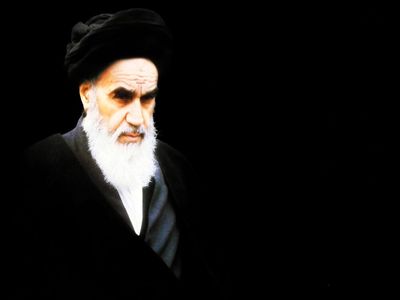“Imam Khomeini is an ever-living truth. His name is the flag of this Revolution, his path is the path of this Revolution, and his goals are the goals of this Revolution,” Ayatollah Khamenei said in a message on the first anniversary of the demise of Imam Khomeini.
The Leader of the Islamic Revolution continued to reiterate the notion of Imam Khomeini’s everlasting legacy in the next years and decades. This is in part because Imam Khomeini made history by transforming Islam into a religion of the state for the first time in modern history. And faced an unusual enemy in leading his game-changing Islamic movement to victory: Mohammad Reza Shah, who led an armed-to-the-teeth regime, was fully supported by the West.
In many ways, Imam Khomeini’s victory over the Shah regime was unusual. The Shah had everything to survive from a windfall of oil revenues to a modernized set of security apparatuses that were backed and trained by world-class formidable spy agencies.
But the Shah lacked one thing that was crucial for any regime to survive: popular support.
On the other hand, the Imam had nothing but popularity among increasingly alienated people and a firm belief in God. And that equipped the Imam with the necessary ammunition to take down a ruthless regime that had no qualms about suppressing its own people no matter how many are killed or maimed.
Perhaps here lies the main reason why the whole world, particularly the West, was deeply shocked and surprised over the downfall of the Shah, who wasn’t supposed to crack up. But the Imam did the impossible and the Shah buckled under the strain of demonstrations across the country.
In the months and years after the overthrow of the Shah regime, Imam Khomeini oversaw the process of establishing an Islamic system that continues to this day. The Imam passed away 33 years ago but his legacy lives on under Ayatollah Khamenei who continues to equally bewilder the West with his statecraft.
Ayatollah Khamenei, as is his wont, will deliver a speech on Saturday, June 4, to mark the 33rd anniversary of the demise of Imam Khomeini. The speech is expected to be delivered at the Mausoleum of Imam Khomeini. Imam Khomeini died on June 3, 1989, at the age of 89.
The Imam, also called Ayatollah Seyed Ruhollah Mousavi Khomeini, was born on May 17, 1900, and made a career in religious studies which ended up in him becoming a Marja, the highest position in the Shiite clergy.
In the 1960s and 1970s, he was mainly focused on fighting the Shah regime and was harassed and banished by the Shah regime several times until the victory of the Islamic Revolution, which consigned the Shah regime to the dustbin of history for good.
Imam Khomeini spent over 14 years in exile, mostly in the holy city of Najaf in Iraq. Initially, he was sent to Turkey on 4 November 1964, where he stayed in the city of Bursa for less than a year. He was hosted by a Turkish Colonel named Ali Cetiner in his own residence, who couldn't find another accommodation alternative for his stay at the time. Later in October 1965, he was allowed to move to Najaf, Iraq, where he stayed until being forced to leave in 1978, after then-Vice President Saddam Hossein forced him out after which he went to Neauphle le Chateau in France, according to a biography published by khamenei.ir.
What made Imam Khomeini distinct from many other political leaders is that he developed a religiopolitical theory – velayat-e faqih, the guardianship of the jurisconsult - and then put it into action. The theory in question, developed and implemented by Imam Khomeini, is best outlined in his book Hokumate Islami (Islamic Governance). It provides the theoretical basis for innovative Islamic governance using Islamic tradition and theology.
Only two weeks after the Shah fled Iran on January 16, 1979, Imam Khomeini returned to Iran triumphantly, on Thursday, February 1, 1979, invited by the anti-Shah revolution which was already in progress.
Source: Tehran Times

